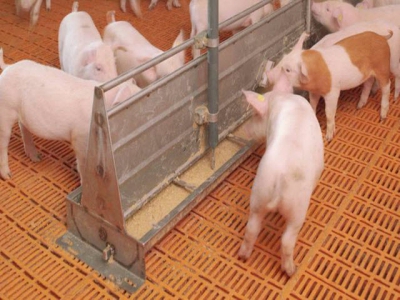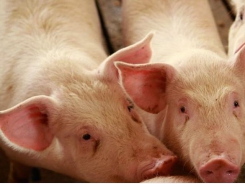Do liquid-fed pigs require extra water?

Theories suggest that offering pigs liquid feed eliminates the need for supplemental fresh water. Is this true?
It is often suggested that liquid feeding eliminates the need for supplemental fresh water. In theory, pigs do not require a separate source of water given that their true requirements for water are satisfied through the daily allotment of liquid feed. Yet, there is a number of unpredictable circumstances under which lack of fresh water may be detrimental to animal health and performance. The following are but a few of such circumstances.
- One of the main advantages of liquid feeding is the ability to use relatively large quantities of inexpensive agro-industrial by-products. Yet, these by-products tend to be rather variable in composition that may change from batch to batch even within the same processing plant. If these by-products are naturally high in sodium chloride or potassium (e.g., whey or molasses), a slight, yet undetected, change in production process or dry matter concentration of the by-product can lead in dramatic changes in dietary composition. Under these unpredictable circumstances pigs may receive a diet that fluctuates widely in nutrient composition including minerals that could lead to “salt poisoning” from water deprivation.
- The assumption that liquid-fed pigs acquire enough water through their daily allotment of soup is based on the traditional 3:1 water ratio (25 percent dry matter) used to prepare liquid feed. But with modern delivery systems, it is possible now to effectively pump a more dense soup that has as much as 33 percent dry matter (2:1 ratio).
- It is finally recommended to offer liquid-fed pigs a supply of fresh water when daily water requirements are expected to fluctuate widely due to environmental changes, insufficient feed intake from excessive competition or under the stress of disease, during which period pigs tend to decrease feed intake and increase water intake.
- During the first couple days post-weaning, or when pigs are switched from dry to liquid feeding, pigs may refuse to consume sufficient quantities of liquid feed to sustain their body weight. Instead, they prefer to drink enough fresh water in an attempt to provide sufficient gut fill for satiety. It is, hence, advised to provide access to fresh water only after feed intake has reached satisfactory levels or limit it to a short period between meals. Caution should be taken to ensure that the liquid feed is properly formulated to avoid “salt poisoning” or that feed formulation does not create palatability problems.
In brief, pigs do require access to supplemental fresh water when fed liquid diets, if only to ensure water intake under special circumstances.
Related news
Tools

Phối trộn thức ăn chăn nuôi

Pha dung dịch thủy canh

Định mức cho tôm ăn

Phối trộn phân bón NPK

Xác định tỷ lệ tôm sống

Chuyển đổi đơn vị phân bón

Xác định công suất sục khí

Chuyển đổi đơn vị tôm

Tính diện tích nhà kính

Tính thể tích ao



 7 ways to reduce tail biting in pigs
7 ways to reduce tail biting in pigs  Fermented wet feed could be game changer for…
Fermented wet feed could be game changer for…